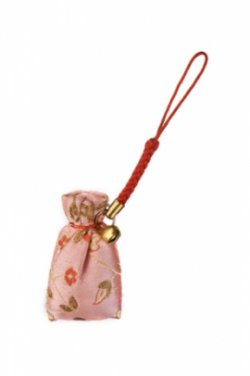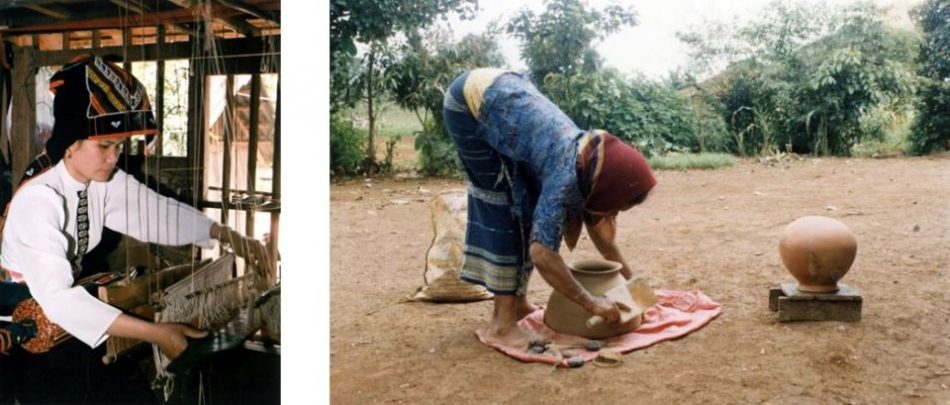Women in Family
Family is important to the Vietnamese people. Through your family, you can trace your lineage and create an environment for nurturing, educating, and shaping the personality of each human being. It is also where the cultural values are shared from one generation to the next.
This exhibit offers the “circle life” of Vietnamese women. They have matured girls, and then they get married and start a new life as wives and mothers. The role and position of women in their family are focused on the wedding rituals in a patrilineal and matrilineal society. It also offers practices, and rituals related to the desire for children, pregnancy, birth, and care of the new mothers and newborns; small business, cultivation, fishing, and foraging, preparing meals, pottery, sewing, and weaving, and raising children.
It consists of three main themes
Marriage
“Men and women are as inseparable as a pair of chopsticks”
– Vietnamese proverb-
Marriage is a starting point for family life. Through marriage rituals and practices of Vietnamese people, the Vietnamese Women’s Museum introduces two types of societies that exist in the country: patrilineal and matrilineal societies.
Patrilineal societies
In Vietnam, patrilineal family structures are practiced by the Viet, Yao, Thai, Sinhmun, Bru-Vân Kieu, Taoi, Ma, and Hoa populations.
Men play an important role in the nuclear family. In the past families were quite large but the birth rate has declined. Male descendants are privileged in patrilineal societies. Children are named after their father and only sons, in particular, the eldest has the right to inherit. While monogamy is now usual in the past many people practiced polygamy.
Matrilineal societies
In Vietnam’s Central Highlands the Ede, Mnong, Jarai, Coho, Churu, and Raglai have a matrilineal tradition as do the Cham, who live along the central plain. The oldest woman has an important place and a decisive role in family affairs. The bride and her family play a major role in the wedding. With some local differences, it is usual for men to live in their wife’s homes and for children to take the mother’s name. Girls inherit family wealth and the youngest girl is the most privileged. Although every child is precious, girls are preferred. At the wedding of a daughter and to welcome their son-in-law, the bride’s parents have to offer the groom’s family compensation in the form of goods, which are determined between the two families. Although the groom lives with his wife’s family, he maintains responsibilities to his original family, especially in wedding rituals.

“I’m a Hanoi girl, and my family attached a lot of importance to traditional ceremonies. I’m a Hanoi girl, and my family attached a lot of importance to traditional ceremonies. I remember the groom’s delegation arriving at my house. I felt very nervous – as is our custom, I was not allowed to welcome the guests, and had to wait alone in a room. I hid behind the curtain, watching through the window. They paraded along the street, carrying gifts in the boxes. They even brought a whole roasted pig on a tray! After the two families had talked together, and my family had accepted the gifts, my husband-to-be brought me down from the room. Meeting so many people for the first time made me feel very shy – but happy. And of course I was curious to see what gifts my husband’s family had brought. The boxes contained traditional offerings like betel leafs and areca nuts, which represent love and marriage. They also included things like alcohol, tea, cigarettes, cakes, money, and much more.”
-The Viet engagement ceremony from the museum audioguige-
The birth
It’s by climbing a mountain that we know how difficult it is
It’s by educating a child that we understand the merits of parents
– Vietnamese folk song-
The desire for children
With the notion that children are the property of each family and maintain the lineage through generations, having children is important to Vietnamese people. There are many ways to express the desire to conceive after marriage, especially for those who are infertile.
The rituals for the request for a child are still frequent today among many groups. Among the Viet, the couples who have no child or no son yet, make a request in a pagoda or a temple and ask for amulets that the women will wear, hoping that their wishes will come true. Some groups invite a ritual master to officiate at home. One can organize these rituals several times until the request is fulfilled. During pregnancy, the woman has to observe certain taboos and practice many rituals to protect herself and the baby.

The amulets to protect pregnant women

Bùa cầu an thai của dân tộc Việt, Vụ Bản, Nam Định
Pregnancy
Prior to giving birth, women usually practice traditions handed down in the community to give birth easily, such as eating sesame porridge in the Viet community. The Hmong and Dao people invite shamans to give blessings to those who are having difficulties during birth. The Thai spread crushed sesame on the stomach.
Care for new mothers
For the Viet, recovery from childbirth normally takes one month, but it can last up to 100 days for some women. In some ethnic community groups, the recovery period can be reduced to less than a week. During this time, new mothers must follow a strict diet. For the Viet, young fruit such as papaya or banana flower is included in the daily diet to foster lactation. The new mother’s room should be warm, free of draughts, and purified by the smoke of special herbs. Heating is provided by embers or the kitchen fire in most ethnic populations. Cham and Central Viet communities keep new mothers warm with jars of embers under the bed during the first month after birth. The Thai keep new mothers warm with jars of embers and kitchen fires for between 7 to 10 days.
“In my hometown of Tam Ky in Quang Nam province, burning coal after the birth remains a popular custom. I used this clay pot after I gave birth in 2007. My mother-in-law first taught me how to use it – I had to lie on my belly on the bed, while she and my husband took turns to prepare and fan the coal for me. When the coal turned red, they would put honey locust, pomelo peel, or some salt above the pot, which would create a fragrant smell. I’d stay in bed until the coal burned out. I used the pot to keep warm three times a day, after breakfast, lunch, and dinner. I stayed in the house and practiced this tradition for a month, but other women continue use it for up to three months after giving birth.”
– Story of buring coal after the birth from the museum audioguide-
Family’s life
The skillfulness and ingenuity of women in the family are not only shown through the role of being a mother, butalso through the abilities to organize family life and participate in the labor workforce in rural and urban areas.
Agriculture
In rural plains, women cultivate wet rice. Women can participate in all the processes including breeding, harvesting, and plowing. Because of the geographic differences, women from ethnic groups in mountainous areas traditionally use slash and burn cultivation. Polyculture is frequently employed and dry rice, corn, manioc, squash, pepper, and cotton are cultivated in the same field. In some regions fishing and foraging make an important contribution to the daily diet. Foraging is undertaken by women year-round. The most abundant wild foods are wild vegetables, bamboo and rattan shoots, fruit, mushrooms, honey, and medicinal plants.

Sewing and weaving
Weaving is a long-standing tradition for many of Vietnam’s ethnic populations. Men make spinning wheels and weaving looms. Women cultivate cotton, weave cloth, and sew clothes for the entire family. At a very young age, girls are taught to sew by the women of the family. Before the wedding, women make their bridal clothes and presents for the groom’s family such as fabrics, blankets, pillows, and clothing. In many groups, a woman’s skill and experience are judged by the amount and quality of her textiles. Nowadays, the sewing machines are widely used.

Small business
Small business on a full time or casual basis has long existed among certain populations such as the Viet, the Hoa and the Cham. Agricultural and craft products, utensils, food and drinks are sold at home, in a market or on the roadside. Countryside markets are often periodical, but in the city markets are daily occurrences. Most salespersons in markets are women. The development of small business even in remote regions is attracting women, who utilize bicycles, motorbikes, small trucks and mobile phones as business tools.


Raising children
In the traditional family, the work division between the mother and the father is quite specific. The woman fulfills household tasks and the children’s education, while the husband provides economic support for the family. The mother teaches her children the essential things through lullabies, legends, stories, and educational toys, which familiarize the child with daily chores. If the child is a girl, she follows her mother in all her activities to learn her future role as a wife.
In the northern mountains, children wear caps to protect them from the cold. The caps are beautifully decorated and often adorned with amulets to protect the child against evil spirits. Even in our modern society, parents still play an important role in the education of their children.






